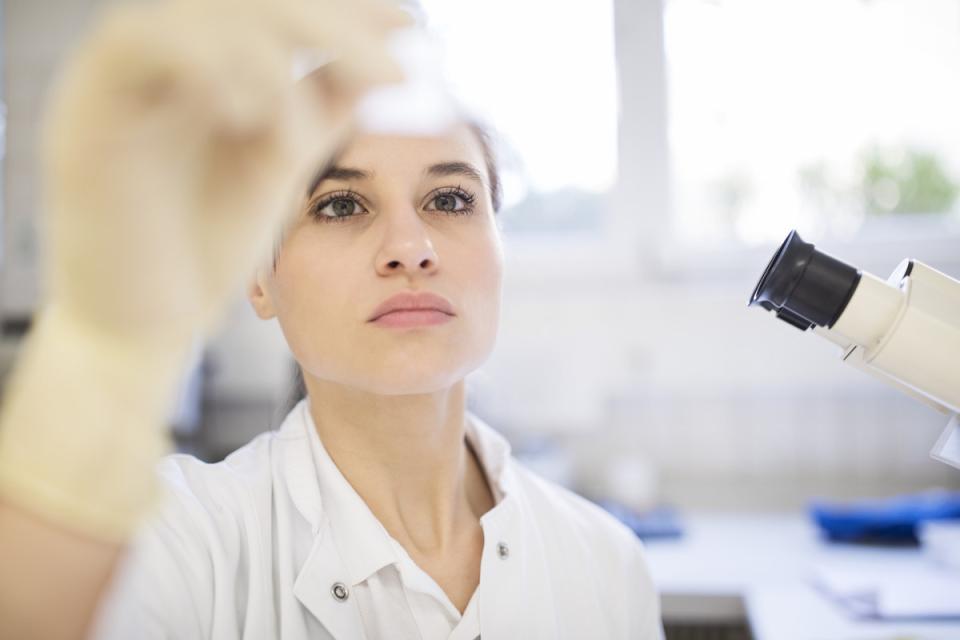Doctors may also biopsy:
- A new or enlarging mass or lesion that has recently been noticed by you or your doctor, as growth could indicate a concern.
- Clustered calcifications, which can sometimes signal early cancer, though most calcifications are typically due to benign causes.
If an area on your mammogram or ultrasound appears abnormal, the radiologist, in consultation with your primary care physician, may recommend a biopsy. In most cases, you'll schedule the biopsy within a few weeks of your imaging exam.
Here’s how it’s done
One of the most common types of biopsies is a core-needle biopsy, typically performed in a radiology suite or breast surgeon’s office with the help of imaging. Here’s what you can expect:
- If a lesion is found through a mammogram, the biopsy will likely be guided by mammography.
- For concerns found with ultrasound or MRI, those imaging methods will guide the biopsy.
- A physician will use local anesthetic to numb the area before inserting a biopsy device that takes several tissue samples.
- The samples are sent to a lab for evaluation, and a small metal marker is often left behind to mark the site of biopsy.
- The procedure is quick and generally involves minimal bruising, with the numbing being the most uncomfortable part — like dental work.
- You are bandaged, given an ice pack to reduce bruising and sent home within an hour. Results typically arrive within a few days.
“While a biopsy may feel daunting,” says Dr. Sigalove, “our goal is to guide you through this routine procedure and provide clear answers. With the support of your HonorHealth care team, you’re taking an important step in staying proactive about your breast health.”
Related content
Early detection saves lives
Catching cancer early can truly change everything. By staying proactive and taking charge of your health, you’re setting yourself up for the best possible outcome — let’s prioritize your health together.
Small steps, big difference
A mammogram is a quick moment of care for your health that brings big peace of mind. While it may feel a little uncomfortable for just a few minutes, the reassurance you gain is well worth it.
From fear to empowerment
Breast cancer presents many challenges, but you don’t have to face it alone. Tamikqwa’s story highlights how a supportive, compassionate team and a hopeful mindset can make all the difference.

